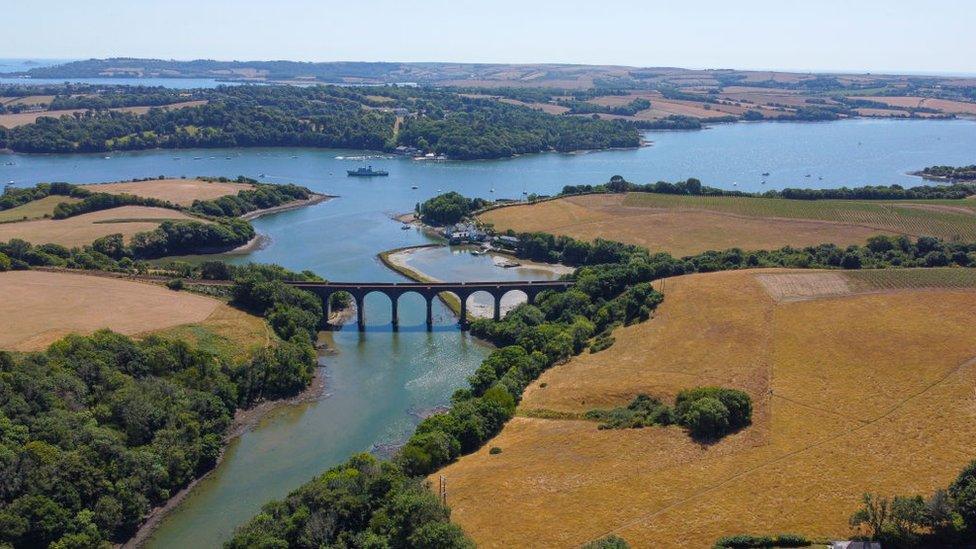UK heatwave comes to an end today with rain expected
- Published
- comments
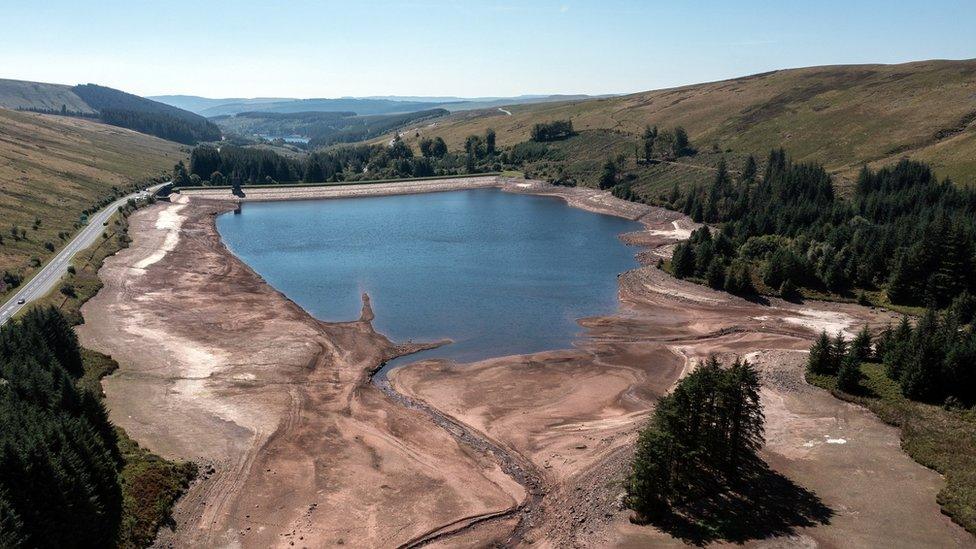
The UK's latest heatwave is expected to come to an end today, with thunderstorms expected in some parts of the country.
A yellow weather warning has been put in place by the Met Office, from 10am on Monday and will last until just before midnight.
While temperatures have not reached the highs of July's heatwave, August's heatwave has been longer.
Many regions of England are now in drought, with reservoirs and rivers at very low levels across the whole of the UK.
But rain in Scotland, Northern Ireland and the north west of England on Sunday has marked the end to the heatwave in the north and west of the country.
Other parts of England and Wales will see rain on Monday.
Experts have warned a lengthy period of rain would be needed to end the drought declared in parts of England on Friday.
Shanequa finds out how the heatwave has dried up part of the River Thames
Rain, rain, come again!
For England, this year has been the driest on record since 1976.
Drought was declared in eight areas by the Environment Agency on Friday, including:
Devon and Cornwall
Solent and South Downs
Kent and South London
Hertfordshire and North London
East Anglia
Thames
Lincolnshire and Northamptonshire
East Midlands
Yorkshire and the West Midlands are also expected to be in drought later in August.
If an area is in drought, it means that there might be more rules in that area that stop people from using too much water.
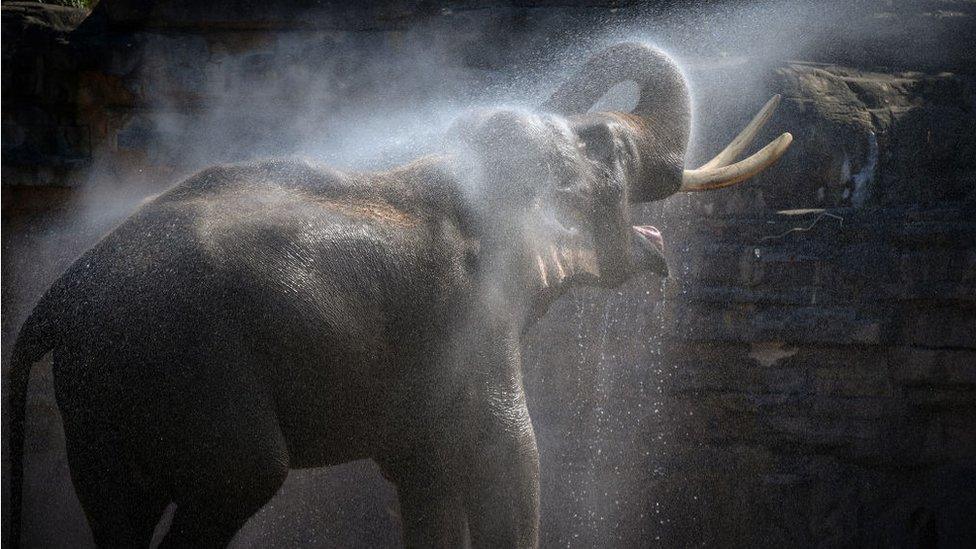
Asian elephant Aung-bo enjoys a blast of water to keep himself cool during the heatwave at Chester Zoo
For example, hosepipe bans have been introduced by water companies into a number of English counties.
So many are welcoming the rainfall this week, hoping it will end the drought and rise water levels across the whole of the UK.
But some experts are warning of rain causing flash flooding on very dry soil.
This is because dry land does not absorb water as well.
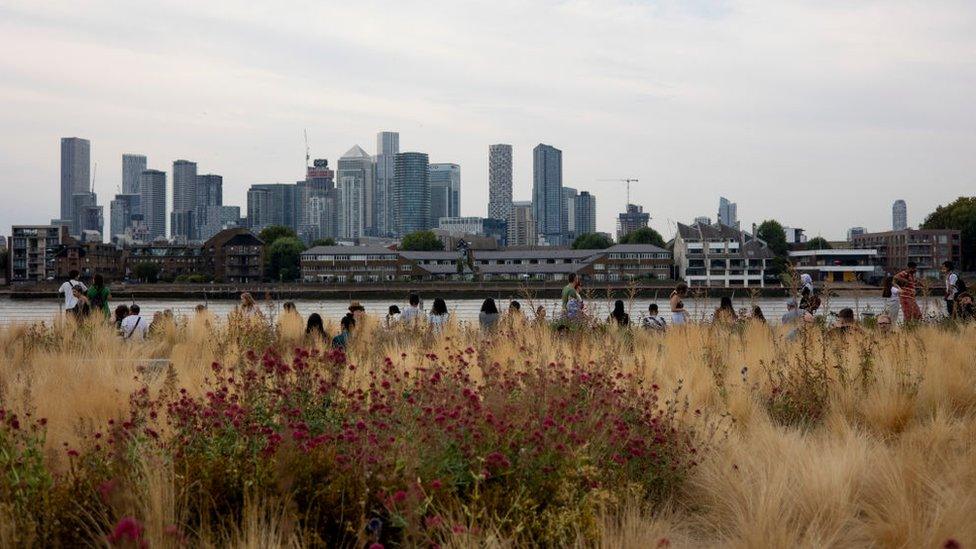
Fields have turned yellow and brown because of the very hot weather
The hot weather has also led to wildfires around England, from the North York Moors National Park to Dorset on the south coast.
And the UK's weather service, the Met Office, has put a yellow warning in place across the UK for thunderstorms on Monday, and for England and Wales on Tuesday.
Their Deputy Chief Meteorologist Jason Kelly said: "The current hot weather will make way for a thundery breakdown from the west, which will spread south and east in the early part of next week."
"Ahead of this, isolated but intense thunderstorms are possible Sunday, Monday and Tuesday."
WATCH: How does a thunderstorm start?
How to stay safe in a thunderstorm
The Met Office have also shared advice on how to stay safe during thunderstorms if you're outdoors:
Avoid activities near water like swimming and fishing, as water attracts lightning
Avoid holding objects that contain lots of metal, like umbrellas, scooters and bicycles
Avoid trees and high, hilly open areas, metal fencing and pylons
Check out Newsround's guide on what to do in a thunderstorm if you're not sure.
Despite the warnings, the risk of lightning to your safety is very low. If you're worried, speak to an adult you can trust about how you're feeling.
You can also find more information on what to do on the Met Office's website.
- Published15 August 2022
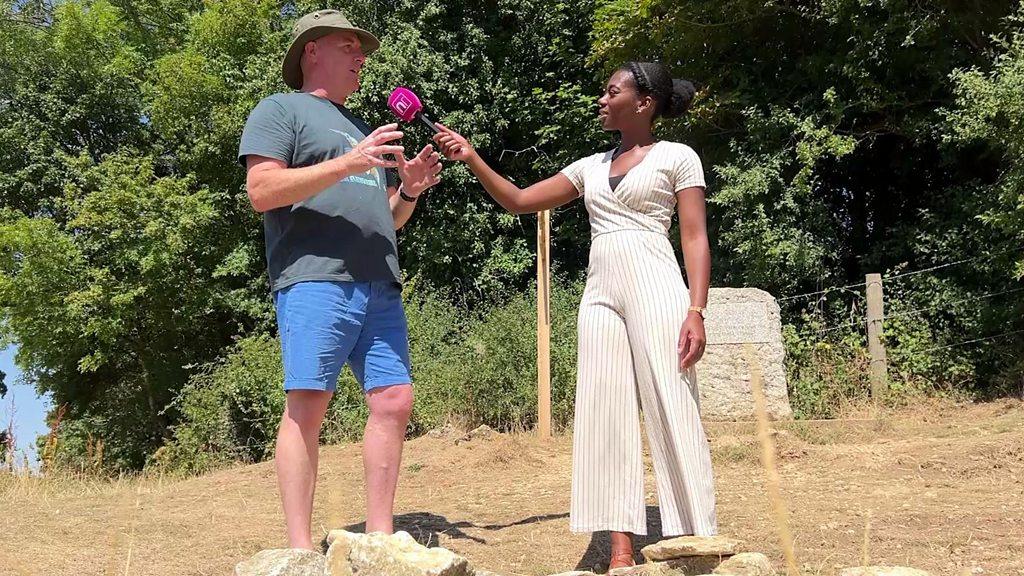
- Published15 August 2022

- Published13 August 2022
